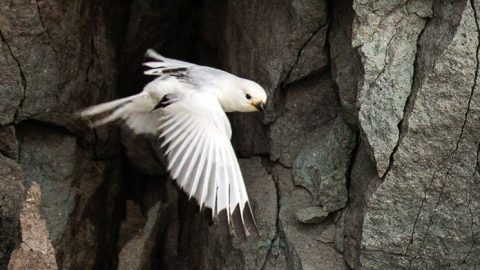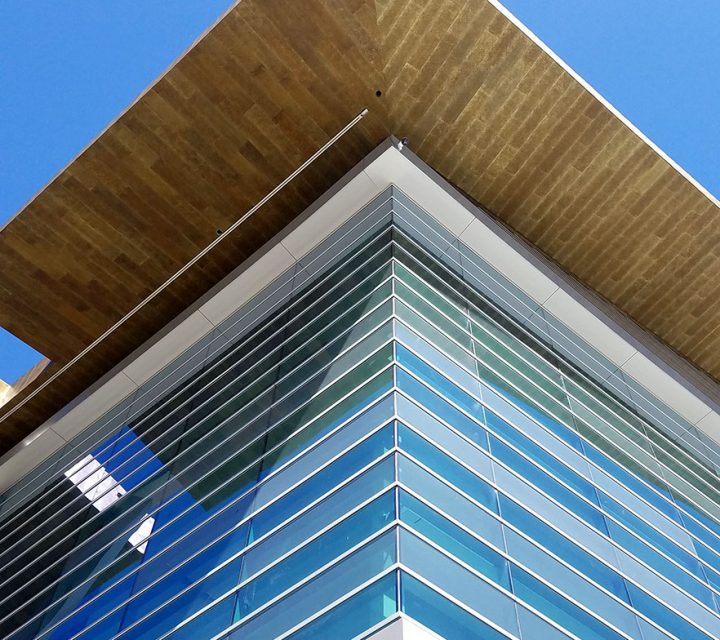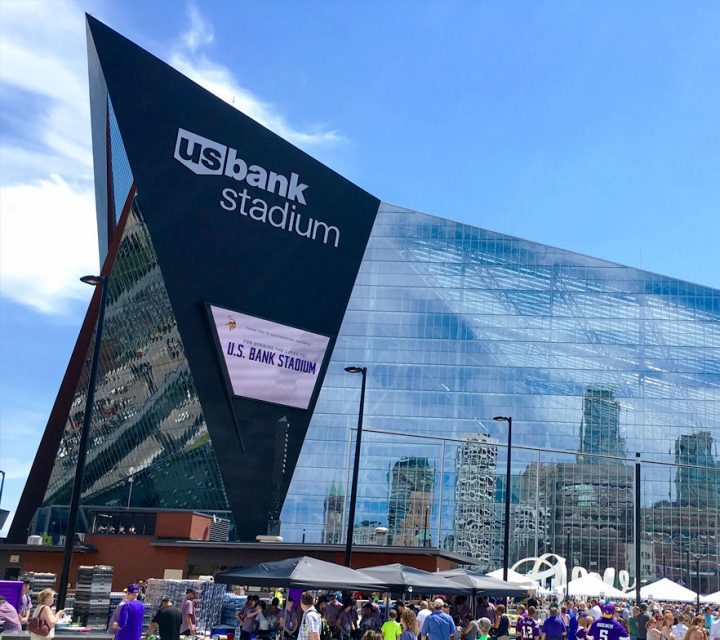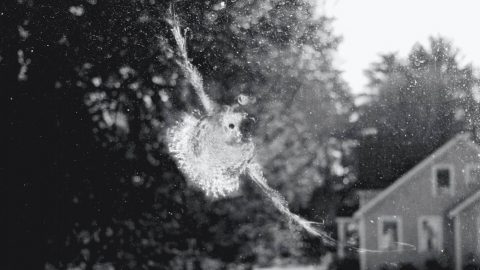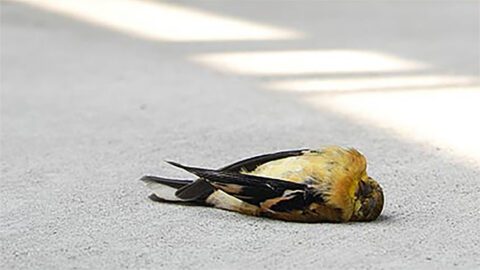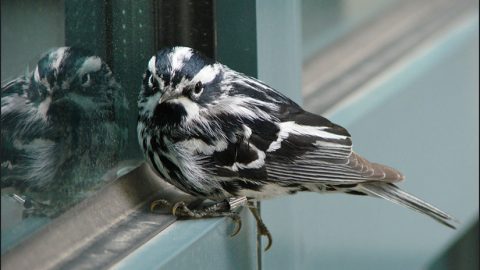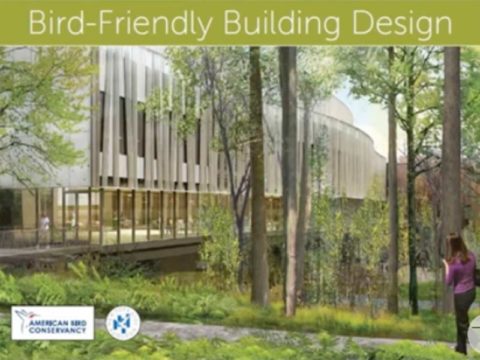The Milwaukee Bucks Have the Most Bird-Friendly Stadium in the NBA
By Marc Devokaitis
March 31, 2019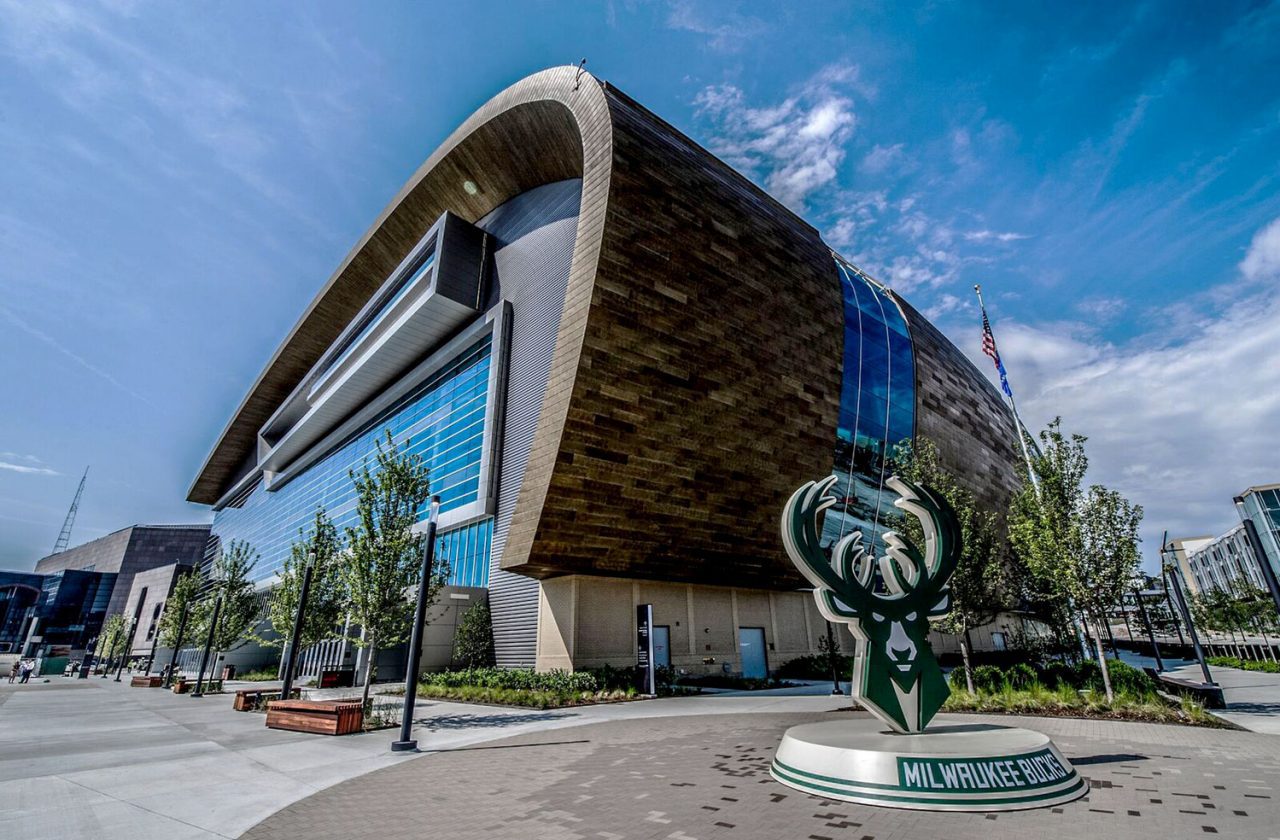
From the Spring 2019 issue of Living Bird magazine. Subscribe now.
In June of 2018, the NBA’s Milwaukee Bucks opened up a new home stadium, and the team immediately made sports history—with the first-ever certified bird-friendly professional sports arena.
Fiserv Forum, located in downtown Milwaukee near the shore of Lake Michigan, earned the Bird Collision Deterrence Credit from the U.S. Green Building Council as part of its LEED Green Building Certification. The credit reflected the stadium’s design considerations for minimizing see-through glass, as well as lighting that can disorient migrating birds and cause them to crash into buildings. Scientists estimate that upwards of 600 million birds die from building collisions in the U.S. and Canada every year.
“The Milwaukee Bucks’ bold decision to build the world’s first bird-friendly arena speaks volumes about the ownership’s character, concern for the environment, and desire to be part of a green community,” said Bryan Lenz, who consulted on Fiserv Forum design planning as the former director of Bird City Wisconsin and now serves as the collisions campaign manager for the American Bird Conservancy. “The Bucks stepped up in a way that no sports franchise ever has.”
The Bucks stand in stark contrast to the NFL’s Minnesota Vikings, which missed the opportunity to go bird-friendly with their new U.S. Bank Stadium two years earlier (despite plenty of coaching from bird conservationists). Located in downtown Minneapolis, the Vikings’ new home stands 30 stories tall, with a sharply peaked roof and 200,000 square feet of glass reflecting the city skyline. Despite warnings from Audubon Minnesota and the Minnesota Department of Natural Resources early in the design process, the football team took no steps to lessen collision impacts for birds during construction of their state-of-the-art, publicly funded building.
As predicted, when the new stadium—which sits squarely in the Mississippi River Flyway—opened in July of 2016, it quickly made news for numerous reports of bird deaths due to the enormous glass facade. Negative press coverage stirred up a public relations firestorm, prompting the team’s owners and the Minnesota Sports Facilities Authority to fund a two-year study of bird mortality at the site. The study results could point toward the need to retrofit the stadium with bird-friendly glass (at over 10 times the cost of incorporating bird-friendly glass during initial construction).
The Bucks, on the other hand, started making bird-friendly plans for their new stadium from the outset, nearly a year before the Vikings’ stadium opened. In summer of 2015, Wisconsin and the city of Milwaukee approved funding for what would become Fiserv Forum, and Lenz and Bird City Wisconsin immediately drafted a letter for the Bucks’ ownership with suggestions for bird-friendly stadium design ideas.

A view of the southwest corner of Fiserv Forum in Milwaukee shows the fritting on some window panes, giving the glass a frosty look. Fritted glass is visible to birds and reduces the danger of collisions. Photo courtesy of Populous. 
The U.S. Bank Stadium in Minneapolis, on the other hand, sports a massive see-through glass facade that poses a significant bird-collision threat right in the heart of the Mississippi River Flyway. Photo courtesy of Wikimedia Commons.
First among them was the use of low-reflectivity fritted glass. Fritting is a thin ceramic coating that makes glass visible to birds up close, but allows the glass to retain its overall transparency.
“It signals to the birds that the window is a barrier, not something to fly through,” Lenz said, “but it is nearly imperceptible to the public.”
After receiving Lenz’s letter, the Bucks ownership invited him to attend planning meetings over the next three years to offer a bird-friendly voice in the building design process.
“I basically made myself a likable pain-in-the-ass,” said Lenz, who has been a Milwaukee sports fan since childhood.
His persistence paid off. And when Fiserv Forum opened last summer, Lenz hoped it was the beginning of a trend for new sports stadiums.
Find out More: Birds and Windows
“I have a list of projects that are in the planning stages, and plans to reach out to local partners in each area when the time is right,” said Lenz, adding that he hopes “the success we saw with Fiserv can be repeated around the country.”
The trend may be catching on. Back in Minnesota, in the city of St. Paul (across the Mississippi River from the Vikings’ stadium), construction is almost complete on another bird-friendly sports facility, Allianz Field. The new home of the Minnesota United MLS soccer team (also known as the Minnesota Loons) has almost no exterior glass. Instead the structure is swathed in PTFE mesh, a woven fiberglass membrane that is extremely durable and highly visible to birds. The plan for the stadium also includes landscaping with native trees and shrubs, and sinking the structure 18 feet into the ground to keep its vertical height to a minimum.
The Loons started thinking about bird-friendly options for their new stadium without any external prompting. That’s because the soccer club’s managing partner, former UnitedHealth Group CEO Bill McGuire, is an avid birder. McGuire told Audubon magazine that the stadium designers consulted the Audubon Society of Portland’s Bird-safe Building Design Kit and reached out to bird-friendly architecture experts.
“Nature and natural resources are a big part of Minnesota’s heritage, so it’s important to remember those elements,” McGuire said in the Audubon story.
Mike Parr, president of the American Bird Conservancy, says it shouldn’t be just a Minnesota thing.
“So many sports teams use animals and birds as mascots,” Parr said. “Surely no sports teams want to kill wild birds at their facilities. The Bucks are showing the way. I am betting some good karma will head their way for this season!”
At the midseason All-Star Break, the Bucks had the best record in the NBA.

All About Birds
is a free resource
Available for everyone,
funded by donors like you
American Kestrel by Blair Dudeck / Macaulay Library
